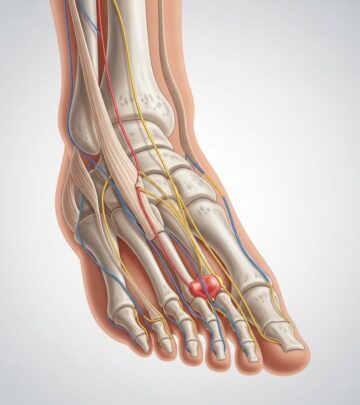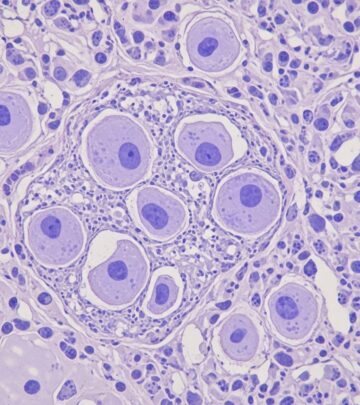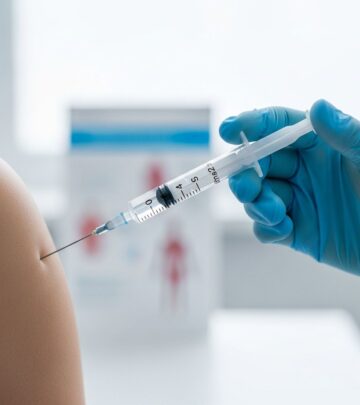Athlete’s Foot: Symptoms, Causes, Risk Factors and Prevention
Learn about athlete's foot: causes, symptoms, risks, complications, and effective prevention strategies for healthy feet.

Athlete’s Foot (Tinea Pedis): An Essential Guide
Athlete’s foot, or tinea pedis, is a contagious fungal infection primarily affecting the feet, often occurring between the toes or on the soles. Although not limited to athletes, the condition frequents individuals exposed to warm, moist environments and is one of the most common skin infections globally, affecting up to 15% of the population at any time.
What is Athlete’s Foot?
Athlete’s foot is a dermatophyte infection that digests the keratin found in the outer layer of the skin. It typically starts between the toes but may spread to other parts of the foot, the hands, or even the toenails. The medical name “tinea pedis” reflects its classification as a ringworm of the foot.
Common Symptoms of Athlete’s Foot
- Itching, stinging, or burning sensations between the toes or on soles.
- Red, inflamed, or scaly rash; sometimes grayish or purplish depending on skin type.
- Cracked, peeling, or flaking skin, most often between the toes.
- Blisters that may ooze or crust over.
- Dryness and scaling extending up the sides or on the sole.
Symptoms may vary depending on the specific fungus and personal hygiene, with severity ranging from mild irritation to persistent, painful lesions. Some cases involve secondary bacterial infections or spread to contiguous areas like the groin or nails.
When to Seek Medical Advice
- If your rash doesn’t improve after two weeks of over-the-counter treatment.
- If you have diabetes and suspect an infection, due to elevated risk of complications.
- If there are signs of spread, pus, pronounced swelling, or fever.
What Causes Athlete’s Foot?
The root cause is fungal dermatophytes: microorganisms such as Trichophyton rubrum, T. mentagrophytes, and Epidermophyton floccosum that thrive on moist, warm skin and digest its outer layer. The following conditions promote their growth and transmission:
- Wearing tight-fitting, non-breathable footwear or socks.
- Frequenting humid public places (locker rooms, pools, communal showers).
- Heavy fabric or plastic-lined shoes that trap moisture.
- Minor injuries to the skin or nails, creating access for the fungi.
- Sharing shoes, towels, or clothing with infected individuals.
- Very sweaty feet or prolonged moisture exposure
Transmission can occur by direct skin contact or indirectly via contaminated floors, towels, bedding, or even pet fur. Scratching or picking the infected area may spread the fungus to hands, groin (resulting in jock itch), or other body parts.
Risk Factors for Athlete’s Foot
- Closed footwear worn for long periods, especially in warm or humid conditions.
- Heavy perspiration of feet
- Public showers, pools, locker rooms
- Shared linens, towels, shoes, or clothing in communal living spaces
- Diabetes or weakened immune systems: These increase risks of complications and harder-to-treat infections.
- Minor skin or nail injuries
- Living with others who have a fungal infection
Complications of Athlete’s Foot
When untreated, athlete’s foot can lead to several complications:
- Spread to other body areas: Fungi can transfer to hands, nails, or groin (causing jock itch).
- Secondary bacterial infection: Skin damage may allow bacteria to cause cellulitis or more severe infections, especially in diabetic individuals.
- Nail infection (onychomycosis): Toenails may become thickened, discolored, or crumbly if the fungus invades the nail bed.
Methods of Prevention
Effective prevention protects not only the individual, but also others in communal spaces. Consider adopting the following practices:
- Keep feet clean and dry: Wash feet daily with warm, soapy water, and dry thoroughly, especially between toes.
- Change socks regularly: Wear clean, moisture-wicking socks. Change at least once a day or more often if sweaty.
- Alternate shoes: Let shoes dry out between wearings.
- Wear protective footwear: Use sandals or water shoes in communal showers, public pools, and locker rooms.
- Avoid sharing personal items: Towels, shoes, socks, and bed linens can transmit fungus.
- Use medicated powders: Foot powders can reduce moisture and inhibit fungal growth, especially for those prone to infection.
- Air out feet: Whenever possible, wear open shoes, especially in warm weather.
Treatment Options
- Topical antifungal medications: Creams containing clotrimazole, terbinafine, or other agents are first-line treatments. Apply as directed (often for four weeks) to achieve complete eradication.
- Oral antifungal therapy: For persistent, widespread, or nail-involved infections that do not respond to topical agents.
- Home remedies: Keeping the feet dry and practicing excellent hygiene are central to all approaches. Some medicated powders and daily foot care can be effective for mild cases.
It’s important to continue treatment until symptoms resolve fully, and sometimes for an additional period to reduce risk of recurrence. If symptoms persist, consult a physician for evaluation.
Frequently Asked Questions (FAQs)
Q: Who can get athlete’s foot?
A: Anyone can contract athlete’s foot, not just athletes. It occurs most often among those who wear closed shoes, use communal showers, or have sweaty feet.
Q: Is athlete’s foot contagious?
A: Yes, it spreads by direct contact with infected skin or contaminated surfaces, such as towels, clothing, shoes, or shower floors.
Q: Why does athlete’s foot often return?
A: The fungus can persist in shoes, on shower floors, or other surfaces. Incomplete treatment or continued exposure to contaminated areas can result in recurrence.
Q: Can athlete’s foot spread to other parts of the body?
A: Yes, especially hands or groin (jock itch) by touching or scratching infected areas. Nail infections are also common.
Q: What increases my risk of getting athlete’s foot?
A: Factors include wearing tight shoes, having sweaty feet, minor skin injuries, using public showers, sharing towels or shoes, and having a weakened immune system.
Comparison Table: Athlete’s Foot vs. Related Fungal Infections
| Condition | Main Location | Symptoms | Common Causes |
|---|---|---|---|
| Athlete’s Foot (Tinea pedis) | Feet, mainly between toes | Itchy rash, cracked skin, blisters | Moist environments, communal surfaces |
| Jock Itch (Tinea cruris) | Groin | Red, ring-shaped rash | Spread from feet, warm, moist areas |
| Nail Fungus (Onychomycosis) | Nails | Thickened, discolored nails | Spread from infected feet |
| Ringworm (Tinea corporis) | Body skin | Red, circular patches | Contact with infected skin/surfaces |
Key Tips to Prevent Athlete’s Foot
- Keep feet clean and dry, focusing on spaces between toes
- Wear moisture-wicking socks and change them daily
- Don’t share footwear, towels, or linens
- Choose breathable shoes; alternate pairs daily
- Use sandals in public showers and pools
- Promptly treat any signs of fungal infection to prevent complications
Summary
Athlete’s foot is a common, treatable infection caused by dermatophyte fungi thriving in moist environments. It often starts as an itchy rash between the toes, and can spread or become complicated if untreated. Maintaining foot hygiene, minimizing moisture, and applying antifungal treatments are the best strategies for prevention and management. If symptoms persist or complications arise, medical attention is necessary.
References
- https://www.mayoclinic.org/diseases-conditions/athletes-foot/symptoms-causes/syc-20353841
- https://www.mayoclinic.org/diseases-conditions/nail-fungus/symptoms-causes/syc-20353294
- https://newsnetwork.mayoclinic.org/discussion/home-remedies-fighting-foot-fungus/
- https://www.mayoclinic.org/diseases-conditions/jock-itch/symptoms-causes/syc-20353807
- https://www.mountsinai.org/health-library/diseases-conditions/athletes-foot
- https://en.wikipedia.org/wiki/Athlete’s_foot
- https://medlineplus.gov/athletesfoot.html
- https://www.mymlc.com/health-information/diseases-and-conditions/a/athletes-foot/
Read full bio of Sneha Tete












